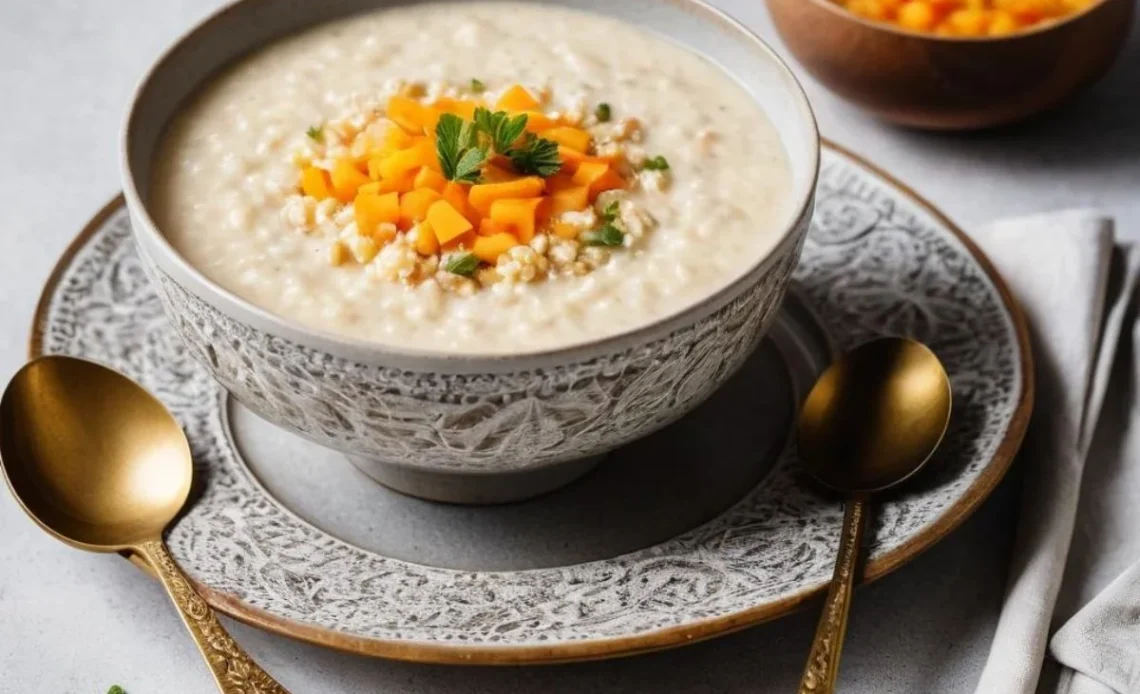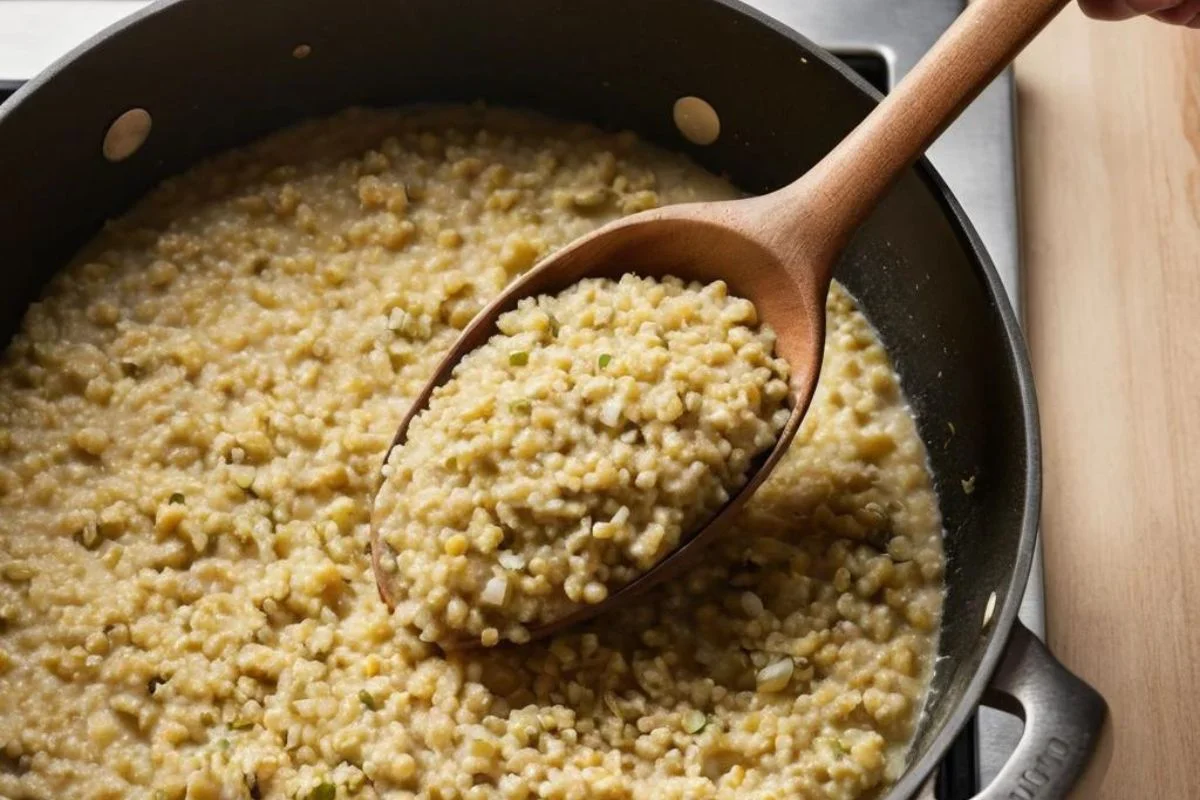
Introduction to Moroccan Belboula
Moroccan cuisine is celebrated for its rich flavors, aromatic spices, and vibrant dishes. One of the standout dishes in Moroccan kitchens is Belboula, a traditional grain-based meal often enjoyed as both a side dish and a main course. This dish has gained popularity for its nutritional value, versatility, and deep cultural significance.
If you’re interested in exploring Moroccan culinary traditions, understanding the importance of Belboula is key. Belboula plays a major role in Moroccan family gatherings, especially during festive occasions. For more insights on Moroccan food culture, check out this detailed guide to Moroccan food culture.
What is Belboula?
At its core, Belboula is a dish made from steamed whole grains, typically wheat or barley. These grains are larger and less processed than couscous, giving the dish a hearty texture. Often paired with meat, vegetables, or legumes, Belboula can be customized to suit any dietary preference.
The grains used in Belboula are rich in fiber, protein, and minerals, making it a highly nutritious meal. For more information on the health benefits of whole grains like those used in Belboula, check out this article on the benefits of whole grains.
Belboula is a versatile dish with regional variations, from the simple, savory versions to those enriched with dried fruits and spices. Whether served as a meal or as a side, Belboula is both filling and satisfying.
Historical Background of Belboula
The origins of Belboula trace back to ancient Morocco, with early mentions in Berber cuisine. Historically, Belboula was not just a meal but a way of bringing people together, often prepared for large family gatherings or festive celebrations. The method of preparing Belboula—hand-rolling the grains—was passed down through generations, a practice that reflects the traditional importance of food in Moroccan culture.
As Belboula spread across different regions, various adaptations emerged. In rural areas, Belboula was often prepared in large quantities to feed extended families and neighbors, reinforcing community bonds. Over time, urbanization has introduced new flavors, but the essence of Belboula remains a timeless symbol of Moroccan hospitality.
Cultural Importance and Occasions for Serving Belboula
In Moroccan culture, food is an essential part of family life and celebration. Belboula is often served during special occasions like weddings, religious holidays, and family reunions. It’s a dish that transcends generations, maintaining its place at the heart of Moroccan festivities.
- Festivals: Belboula is commonly featured during Eid al-Fitr and Eid al-Adha, where it’s served alongside other traditional Moroccan dishes.
- Family Gatherings: At family meals, Belboula is often the centerpiece, shared among loved ones.
- Hospitality: Offering Belboula to guests is a sign of warmth and generosity, reflecting the Moroccan spirit of hospitality.
In rural Morocco, Belboula is particularly significant, as it represents the connection between food and community.
Ingredients and Common Variations of Moroccan Belboula
Belboula is made from simple yet nutritious ingredients, and its flavor can be easily adjusted to suit personal tastes. Here are the typical ingredients and some popular variations:
Common Ingredients:
- Whole wheat or barley grains
- Olive oil or butter for richness
- Vegetables like carrots, zucchini, and onions
- Meats such as lamb, chicken, or beef
- Spices like cumin, cinnamon, ginger, saffron, and coriander
Regional Variations:
- Sweet and Savory: In some regions, Belboula is made with dried fruits like raisins or apricots, adding a sweet touch to the savory grains and meats.
- Vegetarian Versions: For a plant-based twist, Belboula can be made with chickpeas, bell peppers, tomatoes, and other vegetables, creating a wholesome and filling dish.
- Spicy Twists: Adding chili peppers or paprika can give Belboula a spicy kick, balancing the sweetness from the dried fruits or vegetables.
Belboula’s versatility makes it easy to adjust to different dietary preferences, from gluten-free options to hearty meat dishes.
Health Benefits of Moroccan Belboula
Not only is Belboula delicious, but it’s also packed with health benefits. The main ingredient—whether wheat or barley—provides a high amount of fiber, which supports digestive health.
- Digestive Health: The fiber content in Belboula helps regulate digestion and prevents constipation.
- Heart Health: Whole grains like barley are known to reduce the risk of heart disease by lowering cholesterol.
- Rich in Nutrients: Packed with essential vitamins, minerals, and antioxidants, Belboula offers a well-rounded nutritional profile.
- Sustained Energy: The complex carbohydrates in Belboula provide long-lasting energy, making it an ideal choice for a filling meal.
With its blend of grains and vegetables, Belboula aligns well with Mediterranean diets, known for their heart-healthy benefits.
How Moroccan Belboula is Traditionally Prepared
To create an authentic Belboula, it’s important to follow the traditional methods of preparation, which involve careful steaming and layering. Here’s a simple guide on how to prepare it:
Step-by-Step Process:
- Prepare the Grains:
- Wash and soak the whole wheat or barley overnight to soften them.
- Steam the grains until they are tender and fluffy, typically using a traditional steamer known as a couscoussière.
- Cook the Meat and Vegetables:
- In a large pot or tagine, sauté onions, garlic, and your choice of meat (chicken or lamb).
- Add vegetables like carrots, zucchini, and tomatoes, along with your favorite spices.
- Allow the dish to simmer until the meat is tender and the flavors meld.
- Combine and Serve:
- Layer the steamed grains with the cooked meat and vegetables.
- Garnish with fresh herbs like parsley or cilantro before serving.
This method preserves the traditional flavor and texture of Belboula, ensuring you enjoy a truly authentic Moroccan dish.
Popular Moroccan Belboula Recipes
There are many ways to enjoy Belboula, whether as a main dish or a side. Here are some popular recipes:
- Classic Belboula with Chicken and Vegetables: A comforting and hearty dish made with chicken, carrots, and zucchini.
- Belboula with Lamb and Dried Fruits: A sweet-savory variation featuring tender lamb and dried apricots or raisins.
- Vegetarian Belboula: A meat-free version with chickpeas, bell peppers, and a blend of aromatic spices.
These recipes highlight the versatility of Belboula and how it can be adjusted to suit different tastes and preferences.
Serving Suggestions for Moroccan Belboula
Belboula pairs beautifully with other Moroccan dishes, enhancing the overall dining experience. Here are some ideas for serving:
- Moroccan Salads: Serve alongside refreshing salads like taktouka (a tomato and pepper salad) or zaalouk (a smoky eggplant and tomato dish).
- Soup Pairing: Complement Belboula with a bowl of Harira, a rich Moroccan soup made with tomatoes, lentils, and lamb.
- Garnishes: Top with slivered almonds, sesame seeds, or fresh herbs for added texture and flavor.
These additions will help round out the meal, offering a full Moroccan dining experience.
Frequently Asked Questions about Moroccan Belboula
What is the difference between Belboula and couscous?
Belboula is made from larger grains, while couscous is much finer. Both dishes are staples in Moroccan cuisine, but Belboula provides a heartier texture.
Can Belboula be made in advance?
Yes, you can prepare Belboula ahead of time and store it in the refrigerator. Simply reheat it when ready to serve.
Is Belboula gluten-free?
Traditional Belboula is made with wheat or barley, which contains gluten. For a gluten-free version, substitute the grains with quinoa or rice.
Conclusion
Moroccan Belboula is a timeless dish that combines nutrition, flavor, and culture. Its versatility makes it suitable for any occasion, from casual family dinners to grand celebrations. By following traditional preparation methods, you can bring a taste of Morocco into your home and enjoy this hearty, wholesome dish.



